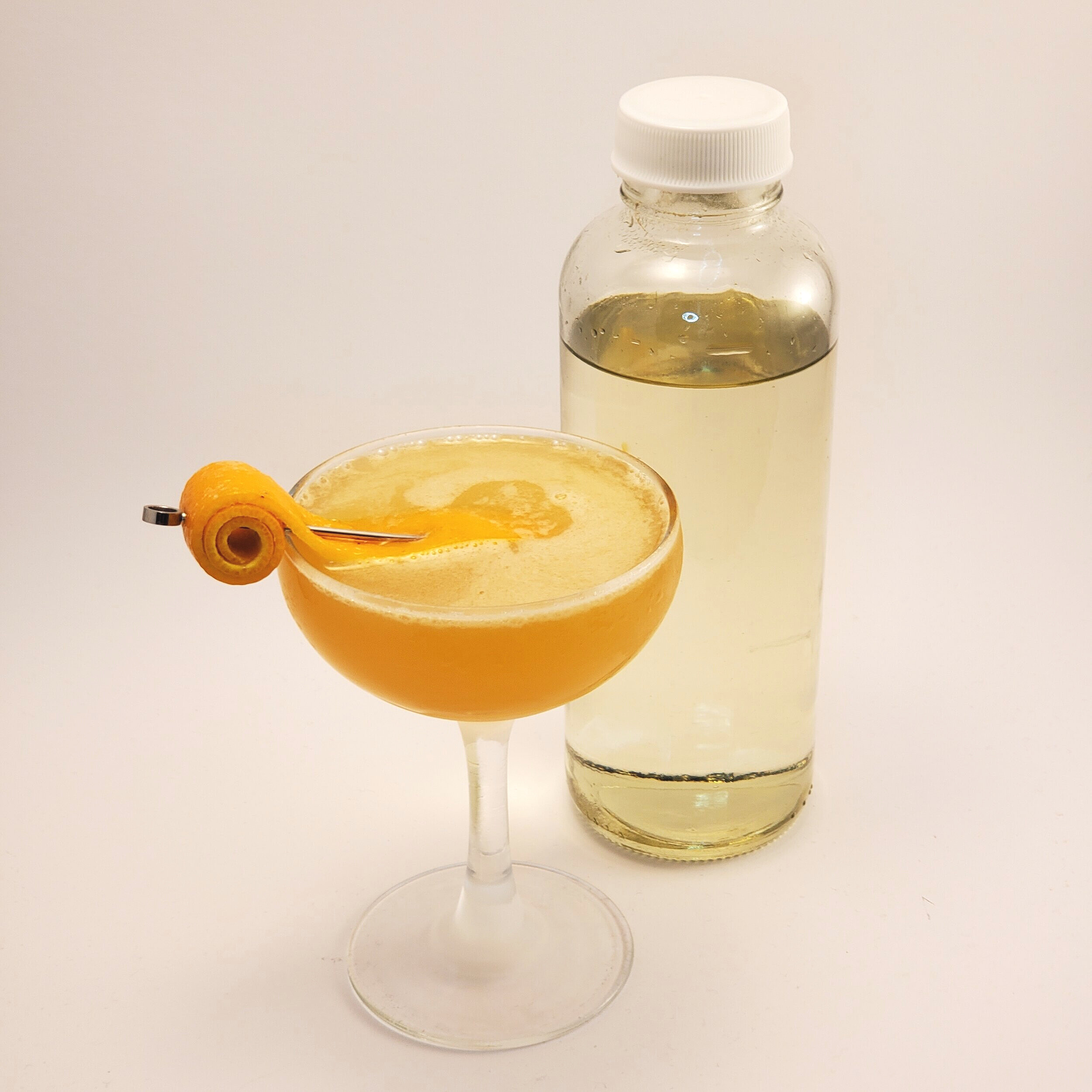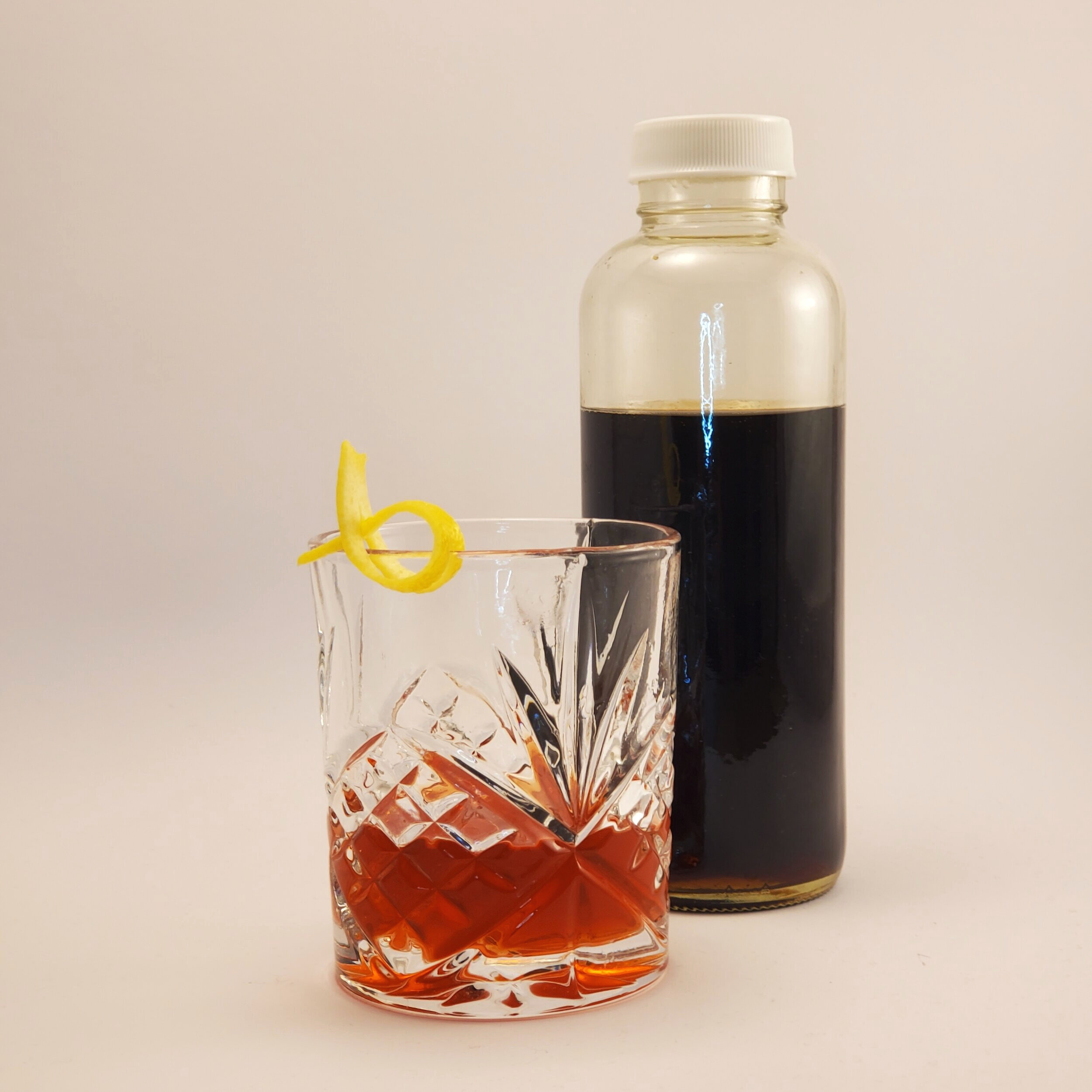The Basics: Simple Syrups
The Reading & Drinking: Basics series is designed to explain and explore fundamental recipes and tools for making cocktails. This series looks at the often overlooked and highly necessary components for making cocktails, at home or elsewhere!
In this Basics, let’s look at simple sugar syrups.
Sugar & Cocktails
Syrups are a mainstay for cocktails, adding not only sweetness but also viscosity—mouthfeel. Imagine a story with no description, or a poem without precise language, and that’s what cocktails miss without sweetness, definition, structure. That doesn’t mean a cocktail must be saccharine, and it doesn’t need to have a syrup, but sweetness on the whole is utterly necessary but, if overdone, like too much description interrupting a story, it can ruin the whole shebang.
A lot of bartenders think of sugar in drinks like chefs think about fat in food. The more sugar there is in a cocktail the thicker it will be and the more weight it will have on the pallet. There are, of course, other ways to add weight and viscosity to a drink (such as through the use of a Gomme or by adding an egg to a cocktail), but the easiest way is through sugar, and the simplest way to add sugar to a drink is with a syrup, which is a mixture of water and some form of sweetener, like white sugar. Often referred to as “simple syrup,” white sugar and water are mixed in equal proportions until fully incorporated, though the parts of sugar to water can vary and are usually referenced as (1:1) or (2:1). 1:1 is traditional simple syrup in equal proportions, 2:1 is called a “rich” syrup, and 0.5:1 is called a “light” syrup. Usually, 2:1 is the most sugar water can contain before it begins to “fall out,” and gather at the bottom of its container.
There are other syrups often referenced in cocktails, like demerara syrup, agave syrup, and honey syrup, to name a few. Demerara is a sugar that still has some of the molasses from the sugarcane juice remaining in the crystals, and it has a richer, darker flavor (brown sugar is a fine substitute for demerara). Agave syrup is a blend of agave nectar and water. Agave nectar is a fructose syrup derived from the agave plant, which is also used to make mezcal and tequila. It’s often mixed with water in a 2:1 ratio so that it can more easily be mixed into cocktails. Honey syrup is a mixture of honey and water, usually in the 2:1 ratio, for the same reasons. There are other sugars, like jaggery or piloncillo, that make great syrups as well.
Sugar, like salt, is a natural preservative, and will deter fungus and mold in high enough quantities. A 1:1 syrup will keep for between two to four weeks in the refrigerator whereas a 2:1 syrup will keep near indefinitely due to the high sugar content.
Water can be substituted for something else, like tea or coffee, to make a syrup with a unique profile, or even liquids like juices or flat sodas can be substituted, though they often only support a 1:1 ratio due to the sugars that are already present. Some unique cocktails call for more out-of-the-box syrups, like a whiskey syrup, made from rye whiskey and sugar, so get creative.
Much Ado About Syrups
So you know how to make a syrup. Cool. Great. Fantastic. But what are a few easy cocktails to make with, say, a Simple Syrup or a Honey Syrup, or how about a Demerara Syrup? Well, you’re in luck! Below you’ll find some not-so-complicated cocktails you can mix up at home to use up that syrup.
Cocktail: The Sidecar
Syrup: Simple
A classic from a bygone era, the Sidecar is a popular drink and probably the best known Cognac cocktail there is, and simple to boot! Many come with sugared rims—which you can always include—but I find that adding the sugar to the cocktail makes for a consistent, more rounded flavor. Also, I don’t get sugar all over the place.
Sidecar
1.5oz Cognac
0.5oz Calvados*
0.75oz Orange Liqueur
1oz Lemon Juice
1oz Simple Syrup (1:1)
(Optional:) Sugar for rimming glass
Optional: If you’re going to rim your glass with sugar, run a cut lemon around the rim and roll the glass in white sugar, then set aside.
Combine all ingredients in a tin, add ice, and shake for 10-15 seconds.
Pour into your glass and garnish with a lemon.
*This recipe calls for Clavados, which is an apple brandy, but you can simply use a full two-ounces of Cognac if you prefer.
Cocktail: Bee Rumblin’
Syrup: Honey
A riff on the Bee’s Knees, a classic Gin cocktail with lemon and a honey syrup, the Bee Rumblin’ is a Rum variation that leans somewhere between the Bee’s Knees and a Daiquiri.
Bee Rumblin’
1.5oz Aged Rum
0.5oz Overproof Jamaican Rum
0.5oz Banana Liqueur
0.75oz Lime Juice
0.75oz Rich Honey Syrup (2:1)
Add ingredients to a shaker, then add ice and shake for 10-15 seconds.
Strain into a coupe and garnish with a lime wheel.
Cocktail: Sazerac
Syrup: Demerara
The Sazerac is one of those classics, like the Old Fashioned, that never goes out of style. Taking its red hue from Peychaud’s bitters, it’s purported to have been invented in New Orleans and to have been first made with Cognac, both of these claims, of late, seem to be more myth than fact. But despite the modern change to the cocktail’s lore, it remains a cocktail found throughout New Orleans and deliciously amazing with both Rye Whiskey or Cognac. Or Scotch. Or aged Rum. You get the picture.
Sazerac
2oz Rye Whiskey or Cognac
0.25oz Rich Demerara Syrup (2:1)
2 - 4 dashes Peychaud’s Bitters*
(Optional:) 1 - 2 dashes Angostura Bitters
0.25oz Absinthe, for rinse
Add all ingredients (except for absinthe) to a tin without ice and set aside.
Rinse the walls of your glass with the absinthe, making sure to coat the walls and discarding the rest of the absinthe, and then set the glass aside.
Add ice to your cocktail tin and stir until chilled and diluted, about 30-40 turns.
Strain into your rinsed glass and express a lemon peel over the top. You can add the peel to the drink or discard it — this, too, is a topic for debate about the cocktail, but do what you enjoy!
*Peychaud’s Bitters has a unique anise flavor to it, which is a hallmark of this cocktail. If you enjoy that flavor, throw more in, but if you want more of the spirit to come through then do less.






